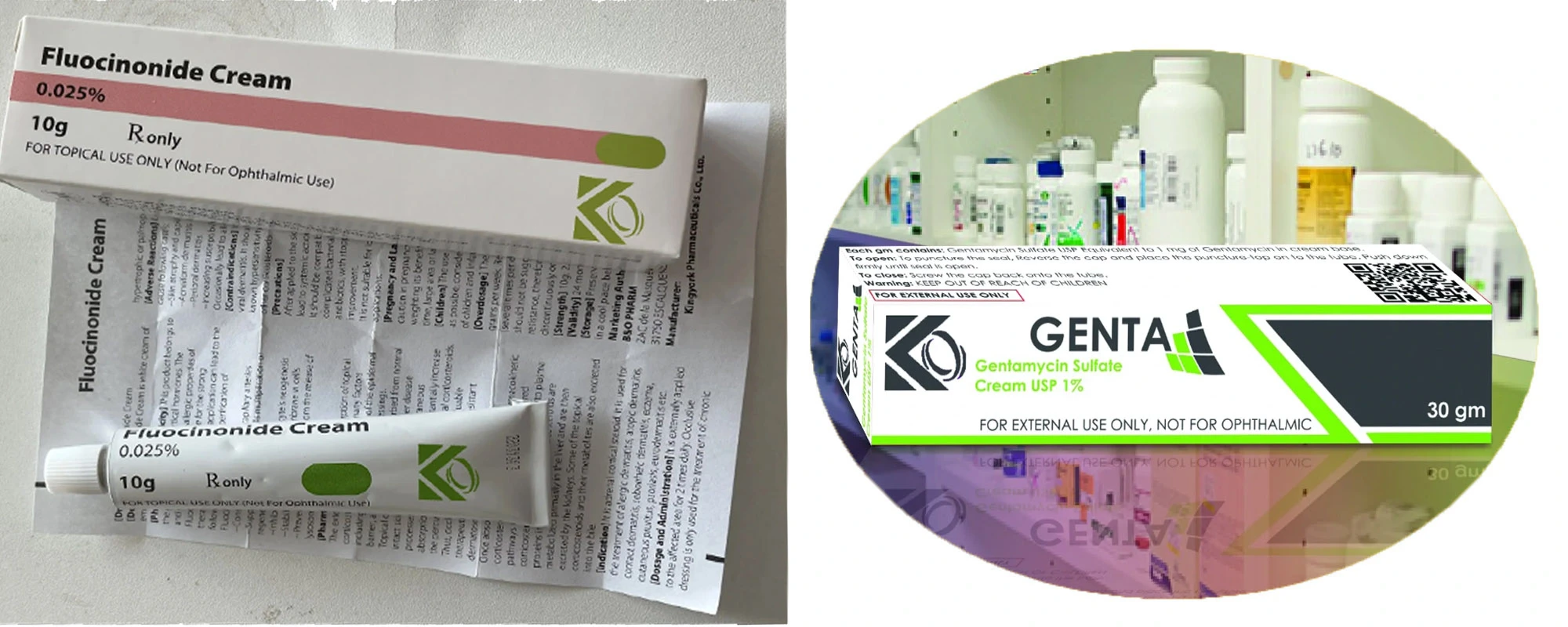Ointment Manufacturing Process
Pharmaceutical ointments are semi-solid preparations intended for external application to the skin or mucous membranes. The manufacturing process for ointments involves several key steps:
**Compounding**
- The process of combining active pharmaceutical ingredients (APIs) with an ointment base. The API is typically mixed with grinding agents and passed through a triple roller mill to reduce particle size. This improves dispersal in the base and enhances drug delivery.
**Mixing**
- Once the API particles are reduced, the medicated powder is blended into the ointment base. Common bases include hydrocarbon gels, absorption bases, water-removable bases, and water-soluble bases. The consistency is balanced between desired viscosity and spreadability.
**Homogenization**
- The ointment mixture undergoes thorough homogenization to ensure uniform consistency and particle distribution. This creates a smooth, homogeneous product. Homogenization is done in stages under vacuum to prevent air incorporation.
**Quality Control**
- Samples are taken throughout the process to verify quality specifications are met. Tests check pH balance, viscosity, texture, odor, color, and drug content per volume. Microbiological testing confirms sterility.
**Filling**
- The finished ointment is filled by automated fillers into tubes, jars, or other packaging. Filling is done under sterile conditions for ophthalmic ointments.
**Packaging**
- Primary packaging holds the ointment with sealing to prevent contamination. Secondary packaging provides external protection and communicates usage instructions, ingredients, and warnings.
The manufacturing process balances achieving proper drug delivery and dispersion with desired viscosity, texture, and consistency. Strict quality control ensures safety, purity, and efficacy of the final medicated ointment product.
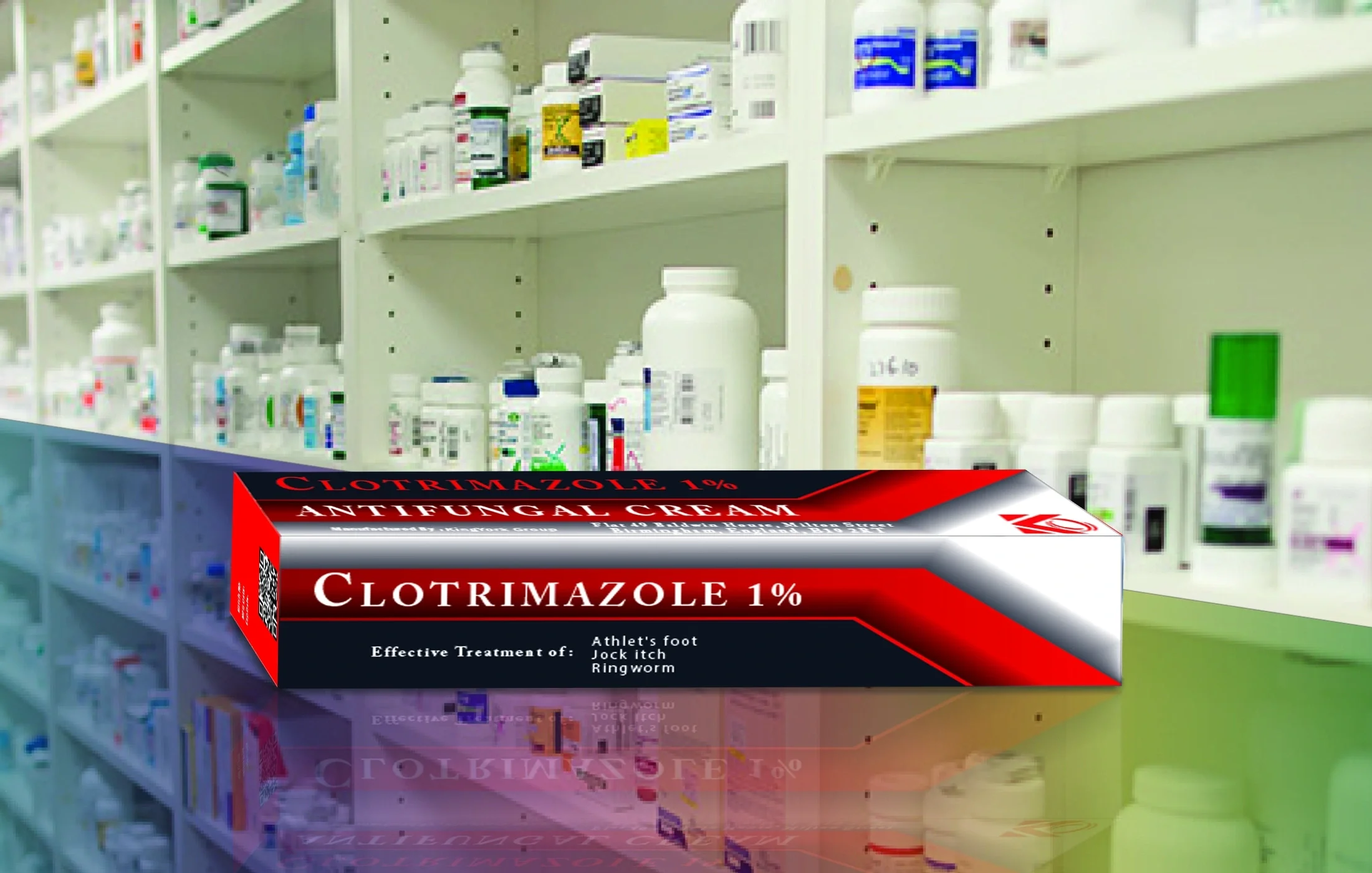
Clotrimazole Ointment
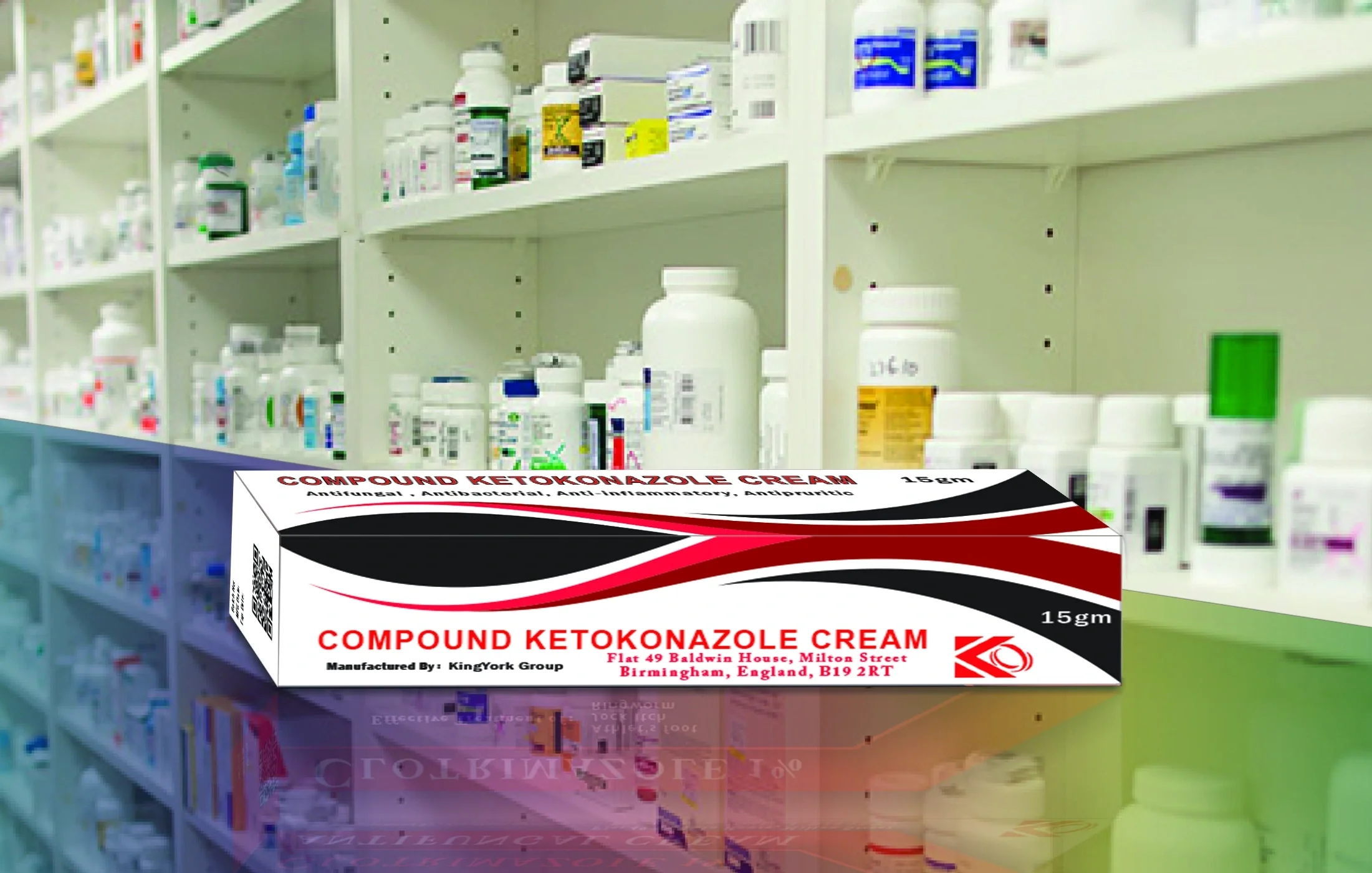
Ketokonazole Ointment
Pharmaceutical Ointments:Common Equipment
Pharmaceutical ointment manufacturing utilizes a variety of specialized equipment. Some of the most essential machines include:
- **Mixers**:
Ointment manufacturing begins with the mixing process. High shear mixers are commonly used to combine the active pharmaceutical ingredients (APIs) with the ointment base. These mixers provide vigorous agitation to ensure homogenous distribution of the API within the base. Planetary mixers and Z-blade mixers are other common choices.
- **Homogenizers**:
These machines are used after the initial mixing process to break down any remaining aggregates and ensure a uniform product. Common types include colloid mills, ultrasonic homogenizers, high pressure homogenizers, and microfluidizers. They work by creating intense turbulence and shear forces.
- **Filling Machines**:
After the ointment mixing and homogenization, the product must be filled into its final packaging, usually tubes or jars. Automated filling machines accurately fill each container with the precise amount of ointment. Popular options are piston fillers, rotary piston fillers and peristaltic pumps.
- **Crimping Machines**:
Any ointment filled into tubes must be sealed by crimping on the cap. These machines automate the process of placing and crimping caps onto filled tubes at high speeds.
- **Labeling Machines**:
Finally, the filled and sealed ointment containers pass through labeling machines which accurately and rapidly apply the proper label. High speed linear labeling machines are commonly used.
The appropriate equipment selection, usage and maintenance helps maximize manufacturing efficiency, output, and end product quality.

Clioquinol Ointment

Miconazole Ointment
Raw Materials
Pharmaceutical ointments contain both active and inactive ingredients that are precisely combined to produce the desired therapeutic effect. The most common bases used for ointments are:
- **Petroleum jelly (petrolatum)**
- A purified mixture of semi-solid hydrocarbons derived from petroleum. It provides an occlusive and protective base for ointments.
- **Wool fat (lanolin)**
- Obtained from sheep's wool, it acts as an emollient and can absorb water easily.
- **Hard paraffin**
- A waxy solid made of saturated hydrocarbons obtained from petroleum. It increases the stiffness and melting point of ointments.
- **Cetostearyl alcohol**
- A mixture of cetyl and stearyl alcohols that acts as an emulsifying agent and stiffening agent.
- **Beeswax**
- Obtained from honeycomb, it acts as a thickening agent and emulsifier.
The active pharmaceutical ingredients provide the therapeutic effect of the ointment. Some common drug components used are:
- **Antibiotics**
- Like neomycin, bacitracin, mupirocin to treat bacterial infections
- **Corticosteroids**
- Such as hydrocortisone, betamethasone to reduce inflammation and itching
- **Antifungals**
- For example, clotrimazole, terbinafine to treat fungal skin infections
- **Anesthetics**
- Such as lidocaine, tetracaine to provide temporary pain relief
- **Keratolytics**
- Like salicylic acid, urea that soften and peel off dead skin cells
The choice of appropriate active and inactive components determines the efficacy and properties of the final ointment product.
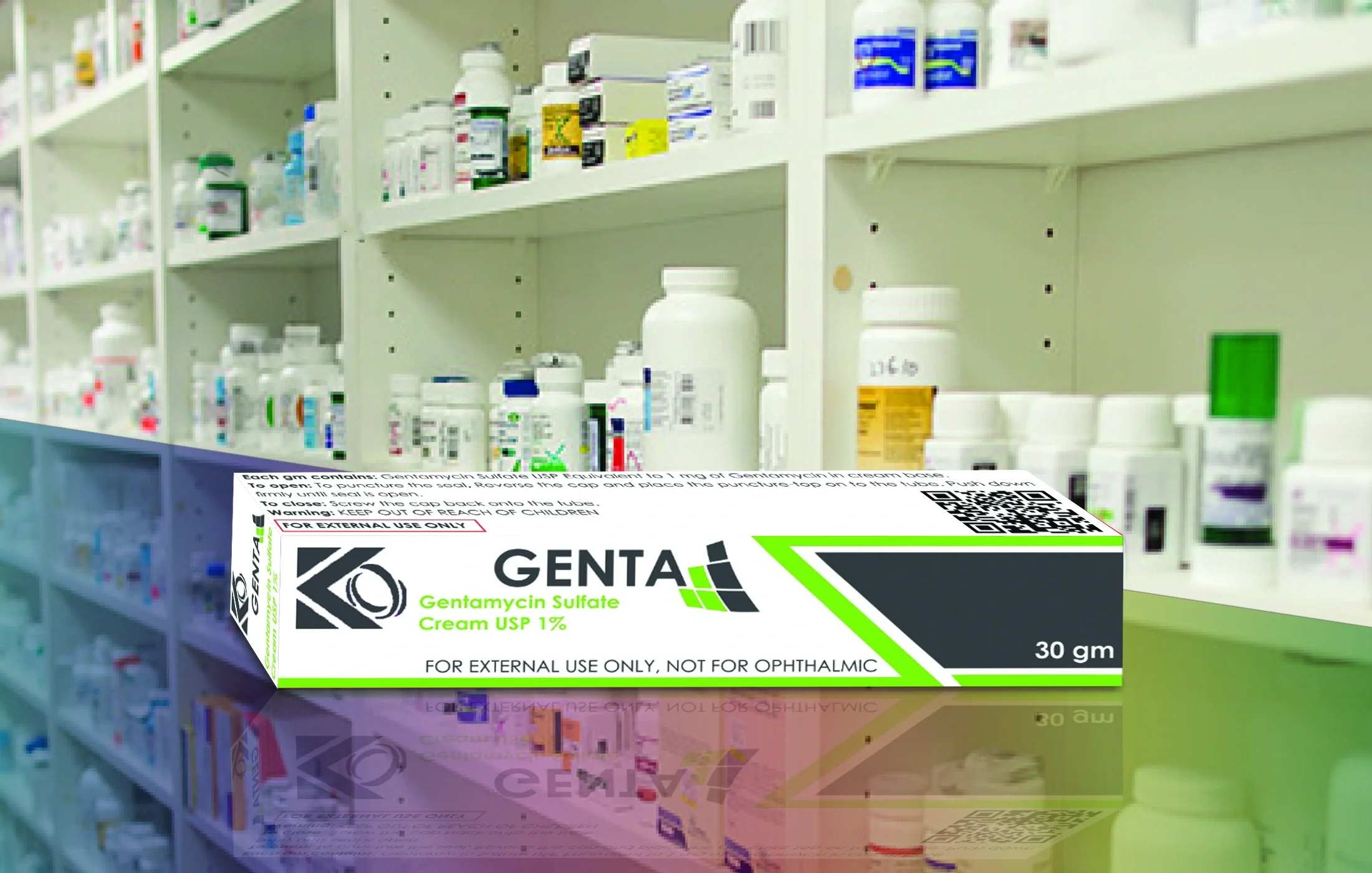
Gentamycin Ointment
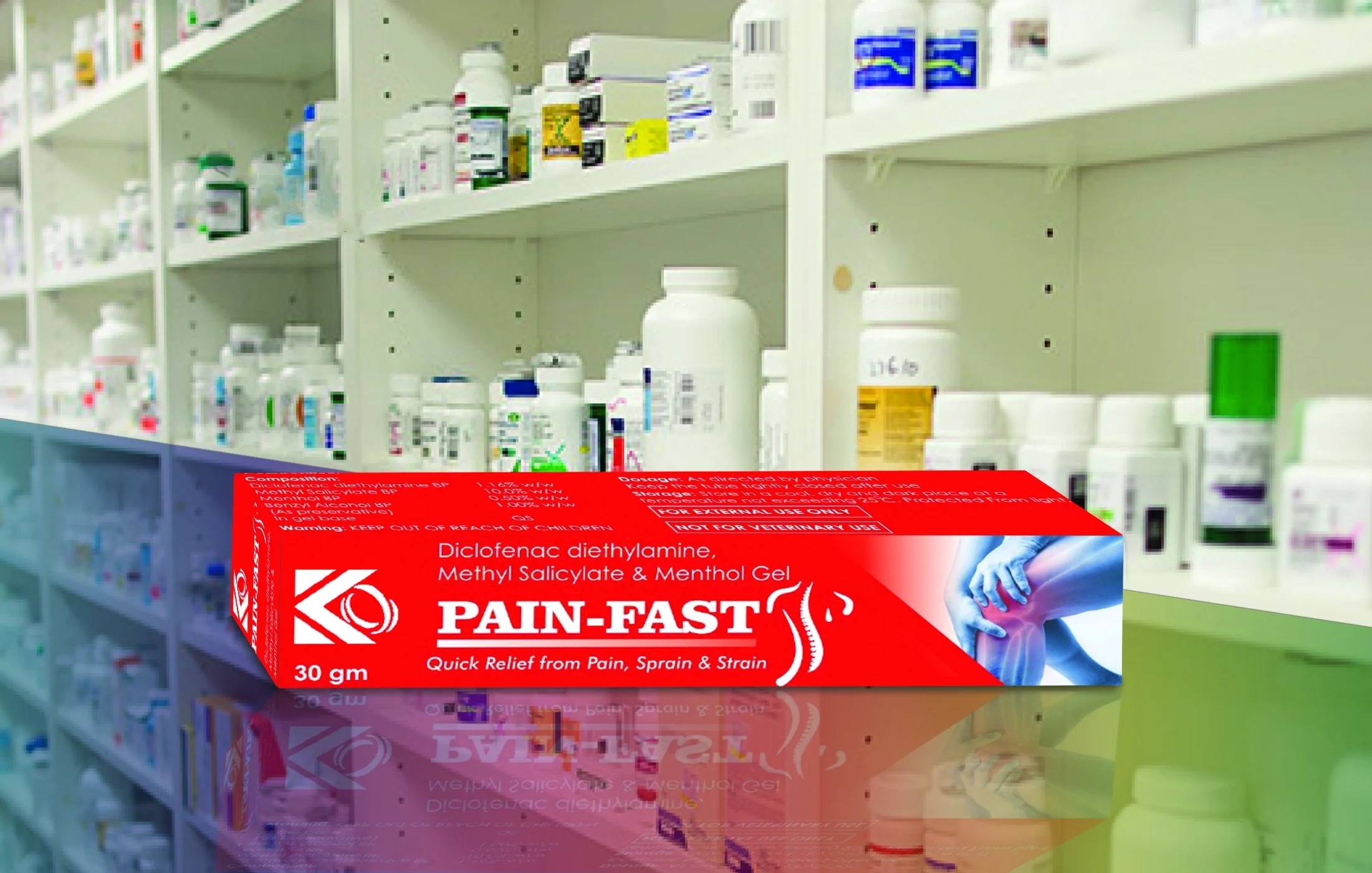
Pain Fast Ointment
Quality Control
Quality control is a critical part of pharmaceutical ointment manufacturing. Ensuring the quality and safety of ointments is essential before they can be released to market. Some key quality control tests include:
Importance of Quality Control
- Ensures product safety and efficacy. Quality control testing verifies that ointments contain the correct amount of active ingredients, meet specifications for dosage delivery, and are free of contamination. This protects consumer safety.
- Compliance with regulations. Regulatory agencies like the FDA have strict guidelines for quality control testing that manufacturers must adhere to before releasing batches of ointments. This ensures products meet quality standards.
- Brand reputation. Defective products can damage a pharmaceutical company's reputation. Rigorous quality control maintains consistent product quality and integrity of the brand.
- Liability avoidance. Insufficient quality control can lead to legal liabilities if defective products cause consumer harm. Proactive testing reduces these risks.
Common Tests
- **Viscosity testing**
- Ointments must have the proper viscosity to be easily applied to skin and stay in place. A viscometer checks viscosity.
- **pH testing**
- The pH level impacts the ointment's efficacy and irritation potential. pH is measured at multiple steps during manufacturing.
- **Microbial testing**
- Samples are tested for microbial contamination like bacteria, fungi, and yeast which could cause infections. Culturing detects microbes.
- **Active ingredient testing**
- The ointment must contain the correct amount of active ingredients/drugs within allowed variance limits, tested via HPLC methods.
- **Performance testing**
- Test stripping and application simulates use to check how the ointment spreads, adheres, and releases active ingredients.
Quality control at all stages of manufacturing ensures ointments consistently meet specifications for safety and performance. Rigorous testing protects consumers and maintains a pharmaceutical company's reputation.
Regulations
Pharmaceutical ointment manufacturing is a highly regulated process. Manufacturers must follow strict regulations and guidelines enforced by government agencies to ensure product quality and safety.
Good Manufacturing Practices (GMP)
Facilities must adhere to GMP regulations which provide minimum requirements for manufacturing, processing, packaging and testing of pharmaceutical products. GMP guidelines cover:
- Facility and equipment design, monitoring and maintenance
- Personnel qualifications and training
- Production and process controls
- Lab controls
- Record keeping
- Handling of deviations and complaints
- Self-inspections
Adhering to GMP ensures proper design, monitoring, and control of manufacturing processes and facilities.
Facility Standards
Manufacturing facilities must meet standards for design, construction, maintenance, and environmental controls. Requirements include:
- Adequate space, lighting, ventilation systems, water and power systems
- Minimizing contamination risks
- Maintaining air filtration, temperature, humidity and pressure differential
- Equipment qualification and calibration
- Facility maintenance and cleaning procedures
Audits and Inspections
Regulators routinely inspect facilities to ensure compliance with GMP and other regulations. Inspections evaluate:
- Manufacturing processes, procedures and records
- Quality control protocols
- Complaint handling
- Personnel qualifications and training
- Facilities and equipment
Deficiencies can lead to sanctions including warning letters, product recalls or facility closure. Self-inspections help ensure readiness for regulatory audits.
Staying current with regulatory guidelines and maintaining rigorous quality systems is crucial for pharmaceutical ointment manufacturers.
Innovations
The pharmaceutical ointment manufacturing industry is seeing exciting innovations that are improving efficiency, quality, and sustainability. Some key innovations include:
**Automated Production Lines**
Many companies are adopting more automated production lines that utilize advanced robotics and sensors. This reduces human error and contamination risk while boosting output. Automated inspection systems quickly identify defects. Overall, automation produces higher quality ointments at lower costs.
**Advanced Mixing Technology**
New mixing systems like the Silverson mixer utilize high shear to produce uniform ointment emulsions. This prevents separation of ingredients and allows creation of very fine dispersions not possible with older mixers. It results in smoother, more stable ointments.
**Sustainable Packaging**
Manufacturers are shifting toward sustainable packaging options such as biodegradable tubes made from plant-based plastics. Some use recycled materials or reduced packaging size to lower environmental impact. Smart packaging sensors can track conditions like temperature to ensure quality.
**Process Analytical Technology (PAT)**
PAT systems use in-line sensors to analyze critical quality attributes during manufacturing. This allows quick adjustments to prevent deviations, as well as insights to optimize future production runs. Implementing PAT reduces waste and boosts quality.
**Modular Facilities**
Many new facilities utilize modular construction with self-contained suites for each part of production. This allows flexible manufacturing of various product types and rapid reconfiguration of production lines. It also enables easier expansion when needed.
Major Manufacturers
The pharmaceutical ointments industry has become increasingly globalized, with major manufacturers operating plants around the world. Some of the leading global companies involved in ointment production include:
- Kingyork group limited - Headquartered in the UK, Kingyork is one of the world's largest pharmaceutical companies. They produce a range of topical ointments including antibiotic, antifungal, and steroid creams. Kingyork has major manufacturing sites for ointments in countries like the US, UK, Spain, China and India.
- Johnson & Johnson - The American multinational J&J produces popular over-the-counter ointment brands like Neosporin and Bengay. The company has major manufacturing facilities for topical ointments in North America, Europe, Asia Pacific, Latin America and other regions.
- Bayer - The German pharmaceutical giant manufactures prescription ointments including corticosteroid creams. Bayer's main ointment production sites are located across Europe, though the company has a global presence.
- Pfizer - Another leading American pharma company, Pfizer manufactures both prescription and OTC ointment products. Key manufacturing sites for ointments are found in places like the US, China, Germany, Japan and Singapore.
- Novartis - The Swiss multinational operates major ointment manufacturing facilities in Europe, Asia, Africa and Latin America. Topical products include antifungal, antibacterial and specialty ointments.
- Sanofi - Headquartered in France, Sanofi is a significant global producer of steroid, antiseptic and analgesic ointments. The company has major production sites in Europe, North America, Asia Pacific, Latin America and Africa.
Cost Analysis
The costs involved in pharmaceutical ointment manufacturing can be broken down into fixed and variable components. The fixed costs, such as equipment purchases and facility maintenance, remain relatively stable regardless of production volume. The variable costs, like raw materials and labor, fluctuate based on how much ointment is being produced.
Fixed Costs
Some of the major fixed costs involved in ointment manufacturing include:
- Construction and maintenance of a cGMP-compliant facility
- Purchase and maintenance of manufacturing equipment like mixers, mills, homogenizers, fillers
- QA/QC testing equipment and facility
- Certifications and fees
- Salaries for full-time technical and management staff
These fixed facility and equipment costs can amount to millions of dollars in initial investment. Ongoing maintenance and staff salaries also require substantial fixed expenditures regardless of production volume.
Variable Costs
The variable costs that change based on production volume include:
- Raw ingredients like APIs, bases, emulsifiers, preservatives
- Packaging components like tubes, jars, boxes
- Direct labor for manufacturing personnel
- Energy and utility costs
- Waste disposal and environmental fees
Raw materials usually account for the largest variable cost component. As more units are produced, more input materials are required. But increased production volume also enables **economies of scale** - the principle that higher production leads to lower per unit costs. This is because fixed costs can be spread out over more units.
Future Outlook for Pharmaceutical Ointment Manufacturing
The pharmaceutical ointment manufacturing industry is poised for continued growth and innovation in the coming years. Here are some of the key trends shaping the future landscape:
Increasing Focus on Natural Ingredients
There is a growing demand from consumers for ointments made with natural, plant-based ingredients that are perceived as safer and gentler. Manufacturers are responding by reformulating products to replace petroleum-based ingredients like mineral oil and petroleum jelly with natural oils, butters, waxes and extracts. The use of ingredients like olive oil, coconut oil, shea butter and beeswax is on the rise.
Advances in Automation
Pharmaceutical plants are implementing more automated processes like computerized batch production, robotic arms, and self-monitoring quality control systems. This allows for increased efficiency, reduced labor costs, and improved consistency in ointment manufacturing. Advanced analytics based on AI and machine learning will further optimize production.
Tighter Regulations
Regulators are imposing stricter requirements on quality control, testing, sanitation, and active ingredient sourcing. While this increases costs, it improves safety oversight. Manufacturers will need to invest in compliance. Smaller players may get acquired by bigger firms with the resources to meet regulations.
Generic Competition
As patents expire, generic versions of branded ointments will become available. This expands access to affordable ointments but reduces profit margins for original manufacturers. Companies will need to differentiate through innovative formulas, delivery systems, or value-added services.
Personalized Ointments
Emerging technologies like 3D printing may enable personalized ointments tailored to each patient's needs. But regulatory hurdles remain for such customized manufacturing. If achieved, it could significantly impact healthcare.
The future of pharmaceutical ointment manufacturing will be shaped by these trends towards natural, automated, regulated, competitive yet personalized products. Companies that adapt will thrive. Those that cling to old ways risk extinction. But patients worldwide stand to benefit from the innovations ahead.
Product List - Liquid Injections
| Product Name | �
Strength |
| Vitamin B1 injection |
100mg: 2ml |
| Vitamin B6 Injection |
0.1g: 2ml |
| Vitamin B12 injection |
0.5mg:1ml |
| VIT-B Complex injection |
2ml |
| Tri B-inj B1-100mg+B2-100mg+B12-1000mcg |
3ml |
| Vitamin C injection |
0.5g:2ml |
| VITAMIN K1 injection |
10mg:1ml |
| Dexamethasone Na phosphate injection |
4mg: 1ml |
| Dexamethasone Na phosphate injection |
8mg: 2ml |
| Diclofenac Sodium Injection |
75mg:3ml |
| Metoclopramide hydrochloride injection |
10mg:2ml |
| Metoclopramide hydrochloride injection |
5mg:1ml |
| Iron Sucrose IV Injection |
100mg:5ml |
| Iron Dextran Injection |
100mg:2ml |
| Promethazine Hydrochloride Injection |
50mg:2ml |
| Gentamycin sulfate injection |
40mg:2ml |
| Gentamycin sulfate injection |
80mg:2ml |
| Furosemide Injection |
20mg:2ml |
| Aminophylline Injection |
250mg:10ml |
| Paracetamol injection |
150mg:1ml |
| Paracetamol injection |
300mg:2ml |
| Paracetamol injection |
500mg:4ml |
| Paracetamol injection |
600mg:4ml |
| Paracetamol injection |
750mg:5ml |
| Diazepam injection |
5mg/1ml |
| Diazepam injection |
10mg:2ml |
| Diazepam injection |
5mg/1ml |
| Diazepam injection |
10mg:2ml |
| Oxytocin Injection |
5 iu/1ml |
| Oxytocin Injection |
10 iu / 1ml |
| Chlorphenamine Maleate Injection |
10mg:1ml |
| Hyoscine Butylbromide(Buscopan)Injection |
20mg:1ml |
| Lidocaine Hydrochloride injection |
10ml:0.2g |
| Methotrexate for Injection |
50mg:2ml |
| ENOXAPARIN SODIUM Prefilled syringe |
40MG/0.4ML |
| ENOXAPARIN SODIUM Prefilled syringe |
60MG/0.6ML |
| ENOXAPARIN SODIUM Prefilled syringe |
80MG/0.8ML |
| Adrenaline(Epinephrine HCL)Injection |
1mg:1ml |
| Testosterone 250mg:1ml |
250mg:1ml |
Product List - Vial Injections
| Product Name |
Strength |
| Omeprazol 40 mg IV VIAL |
10ml or 5ml |
| Pantoprazole Sodium for Injection |
40mg |
| Lansoprazole for Injection |
30 mg |
| Ceftriaxone 1gm/10ml IV VIAL |
+10ml water |
| Ceftriaxone 1gm/10ml VIAL |
+Lidocain 1% |
| Ceftriaxone IM/IV VIAL |
500mg/15 ml |
| Ampicillin Na VIAL |
0.5 g/Vial |
| Ampicillin Na VIAL |
1g/Vial |
| Cefotaxime Sodium for VIAL |
1g/Vial |
| Ceftazidime For I.M/I.V VIAL |
1g/Vial |
| Cefepime For I.M/I.V VIAL |
1g/Vial |
| Meropenem VIAL Injection |
1g/20ml/Vial |
| Procaine Penicillin(0.4mega/7ml) |
400.000 U/7ml |
| Procaine Penicillin(0.6mega/7ml) |
600.000 U/7ml |
| Procaine Penicillin(1.2mega/7ml) |
800.000 U/7ml |
| Procaine Penicillin (0.8mega/7ml) |
1200.000 U/7ml |
| Benzathine Penicillin for Injection |
1.2mega/7ml |
| Vancomycin Hcl injection 500mg |
500mg/Vial |
| Vancomycin Hcl injection 500mg |
1g/Vial |
| Heparin Sodium Injection |
5ml:5000 units |
| Heparin Sodium Injection |
5ml:25000 units |
| Amoxicillin Na and Clavulanate Potassium for Inj(augmentin) |
G Powder 1.2 |
| Amoxicillin Na and Clavulanate Potassium for Inj(augmentin) |
G Powder 0.6 |
| lyophilized Hydrocortisone Na Succinate |
3ml:0.1gm |
| aseptic lyophilized Hydrocortisone Na Succinate |
7m:0.1gm |
| Phenobarbital Sodium Injection |
1ml:0.1g |
| Piperacillin Sodium and Tazobactam Na for Inj |
4.5g |
Product List - IV INFUSION
| Product Name |
Strength |
| Paracetamol 1G IV infusion |
100ml glass bottle |
| Metronidazole 500mg IV infusion |
100ml glass bottle |
| Ciprofloxacine 200mg IV infusion |
20ml plastic bottle |
| 0.9% Na Chloride IV Inj |
500ml plastic bottle |
| 5% Glucose Injection |
250ml:12.5g,500ml:25g |
| 10% Glucose Injection |
250ml:12.5g,500ml:25g |
| Sodium Lactate Ringer`s Inj |
500ml Plastic Bottle |
| 5% Glu + 0.9% Na Chlorid inj 250ml: |
Glu 12.5g,NaCl 2.25g |
| 5% Glu + 0.9% Na Chlorid inj 500ml: |
Glu 25g,NaCl 4.5g |
| 10% Glu + 0.9% Na Chlorid inj 250ml: |
Glu 25g,NaCl 2.25g |
| 10% Glu + 0.9% Na Chlorid inj 500ml: |
Glu 50g,NaCl 4.5g |
| Mannitol injection |
250ml:50g P Bottle |
Product List - SYRUP
| Product Name |
Strength |
| Amoxicillin 125mg + Clavulanic Acid 31.5mg |
100 ml glass Bottle |
| Amoxicillin 250mg + Clavulanic Acid 62.5mg |
100 ml glass Bottle |
| Amoxicillin 400mg + Clavulanic Acid 75mg |
100 ml glass Bottle |
| Azithromycine 100mg |
15ml 1bottle/Box |
| Metronidazole 125mg |
100 ml glass Bottle |
| Metronidazole 250mg |
100 ml glass Bottle |
| Amoxicillin 125 mg |
100 ml glass Bottle |
| Amoxicillin 250 mg |
100 ml glass Bottle |
| Paracetamol syrup 250mg/5ml |
250mg/5ml syrup |
| Ibuprofen Dry Suspension 100mg/5ml |
100ml Suspension |
Product List - TABLETS
| Product Name |
Strength |
| Azithromycine 500mg Tab(3 tabs) |
3 tablets X 1 blister |
| Metronidazole 500mg Tab(14 tabs) |
7 tablets X 2 blisters |
| Ciprofloxacine 500mg TAB(10 tabs) |
10 tablets X 1 blister |
| Amoxicillin 250mg + Clavulanic Acid 125mg(14 tabs) |
7 tablets x 2 blister |
| Amoxicillin 500mg + Clavulanic Acid 125mg(14 tabs) |
7 tablets x 2 blister |
| Amoxicillin 875mg + Clavulanic Acid 125mg(14 tabs) |
7 tablets x 2 blister |
| Nitrofurantoin 100mg Tablets |
10 tablets X 1 blister |
| Aspirin Enteric-coated 500mg |
10 tablets X 1 blister |
| Paracetamol 500mg |
10 tablets X 1 blister |
| Ibuprofen 400mg |
10 tablets X 1 blister |
| Diclofenac Na 400mg |
10 tablets X 1 blister |
| Diclofenac 50mg + Paracetamol 500mg |
10 tablets X 1 blister |
| Folic acid 5mg Tab |
10 tablets X 1 blister |
| Ciprofloxacin Tablets |
10 tablets X 1 blister |
| Doxycycline 100mg Tab |
10 tablets X 1 blister |
| Meloxicam 15mg Tab |
10 tablets X 2 blisters |
| Fluconazole 150mg Tab |
10 tablets X 2 blisters |
| Simvastatin 40mg Tab |
10 tablets X 2 blisters |
| Prednisolone 5mg Tab |
10 tablets X 2 blisters |
| Spiramycin 750,000 unit Tab |
10 tablets X 2 blisters |
| Spiramycin 1,500,000 unit Tab |
10 tablets X 2 blisters |
Product List - CAPSULES
| Product Name |
Strength |
| Amoxicillin 500mg(16 Capsules) |
8 cap X 2 blisters |
| Ampicillin Capsules |
10 cap X 2 blisters |
| Cloxacillin Na Capsules |
10 cap X 2 blisters |
| Piroxicam Capsule |
10 cap X 2 blisters |
| Tetracyline 250 mg Capsule |
10 cap X 2 blisters |
| Oxytetracycline 250mg Capsule |
10 cap X 2 blisters |
| Spiramycin 375,000 unit Cap |
10 cap X 2 blisters |
| Indomethacin 25mg Capsule |
10 cap X 2 blisters |
Product List - Suppository
| Product Name |
Strength |
| Paracetamol 125mg suppository |
5 Supp x 2 blister |
| Paracetamol 250mg suppository |
5 Supp x 2 blister |
| Policresulen Vaginal 90mg Suppository |
4 Supp x 2 blister |
| Chlorhexidine Acetate 20mg Supp |
5 Supp x 2 blister |
| Miconazole Nitrate Vaginal 100mg Supp |
5 Supp x 2 blister |
| Clotrimazole Vaginal 150mg Supp |
5 Supp x 2 blister |
| Metronidazole Vaginal 500mg Supp |
5 Supp x 2 blister |
| Indomethacin 500mg Supp |
5 Supp x 2 blister |


